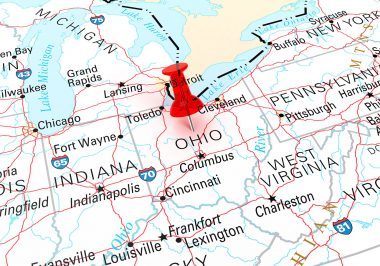AI in Marketing: Top 5 Use Cases for Smarter, Data-Driven Campaigns
Updated Thu, Oct 16, 2025 - 4 min read
Top blog articles
Marketers are overwhelmed by data, fragmented tools, and rising expectations. AI doesn’t replace them — it gives them superpowers. In 2025, smart teams use AI not for “automation,” but for insight, timing, and relevance. Let’s break down the top AI use cases in marketing that make a real impact.
Predictive Audience Targeting and Segmentation
Gone are the days of basic demographics. AI digs deeper. It analyzes behavior patterns, past interactions, and even session data to create micro-segments with high conversion potential.
Instead of targeting “women 25–35 in NYC,” a brand can now target “users likely to buy within 5 days after engaging with a product video, browsing more than 3 pages, and adding an item to cart but not checking out.”
This isn’t guesswork. Algorithms score users by intent. They group audiences based on time-to-purchase probability or churn risk. That’s why any modern AI development agency will offer customer segmentation as a default in their stack. The results are:
- Improved retargeting accuracy.
- Lower ad waste.
- Higher ROAS from niche segments.
- Better email campaign performance.
Prediction isn’t magic. It’s math applied to behavior — at scale.
AI-Enhanced Ad Creatives and Content Generation
AI improves ads. Tools now test hundreds of copy variations, images, and CTA combinations in real time. Platforms like Meta and Google use dynamic creative optimization powered by machine learning.
Need personalized product ads for 10,000 SKUs? AI generates them — on-brand, on-message. Want copy tuned to different buying stages? AI tools like Jasper, Copy.ai, or custom GPT-based apps handle that, too.
Multivariate testing used to take weeks. Now, it’s done live. Winning combinations rise automatically. Weak ones die early. This application of AI in marketing gives the following benefits:
- Creative personalization at scale.
- Cost-effective A/B/C/D/E testing.
- Message clarity tuned to the audience segment.
- Instant headline + image pairing optimization.
AI doesn’t replace your creative team — it turns them into strategists.
Email Campaign Optimization and Dynamic Personalization

Email remains powerful if it’s relevant. AI makes that happen. Instead of fixed templates, marketers use AI to send personalized messages in real time. Subject lines change based on behavior. Product recommendations shift with browsing history. Send time is optimized per user, not per region. If a customer opens an email at 7:43 a.m. on Thursdays, that’s when the next one lands.
Open rates go up. CTR rises. And you don’t need to run 50 manual A/B tests anymore. Additionally:
- Personalized content blocks per user.
- Dynamic product suggestions.
- Predictive send time delivery.
- Reduced churn from triggered journeys.
This is lifecycle marketing without the guesswork, powered by data, not hunches.
Customer Journey Mapping and Conversion Funnel Analysis
In this marketing use case AI tracks more than clicks. It understands behavior patterns across platforms — app, web, email, and support. Then it maps the journey. You don’t just see “bounce rate.” You see why users drop, what pages confuse them, or which touchpoints trigger conversions. AI tools like Heap, Amplitude, and Mixpanel show real paths, not just numbers.
Then it suggests improvements. Fix this friction. Highlight this CTA. Move that upsell earlier. You’ll get:
- Real-time funnel drop-off insights;
- Behavior-based path clustering;
- Journey-level attribution, not just last click;
- Automated conversion rate improvement suggestions.
Marketing used to be reactive. With AI, it’s proactive and highly specific.
Sentiment Analysis and Brand Monitoring
AI reads between the lines. It processes social media, support chats, reviews, and feedback to gauge customer mood. And it does it instantly. Tools like Brand24 or Sprout Social now use AI to flag tone changes, spot rising issues, or surface hidden praise. You know if a product line is being trashed on Reddit, even before it hits sales. Your outcomes will be:
- Emotion-tagged brand mentions;
- Instant alerts for spikes in negativity;
- Reputation insights across channels;
- Trend spotting in product feedback.
Sentiment is a leading indicator. Such AI use case in marketing allows you to spot it before it explodes or fades.
Read more: AI for real estate: Changing homeownership experiences









